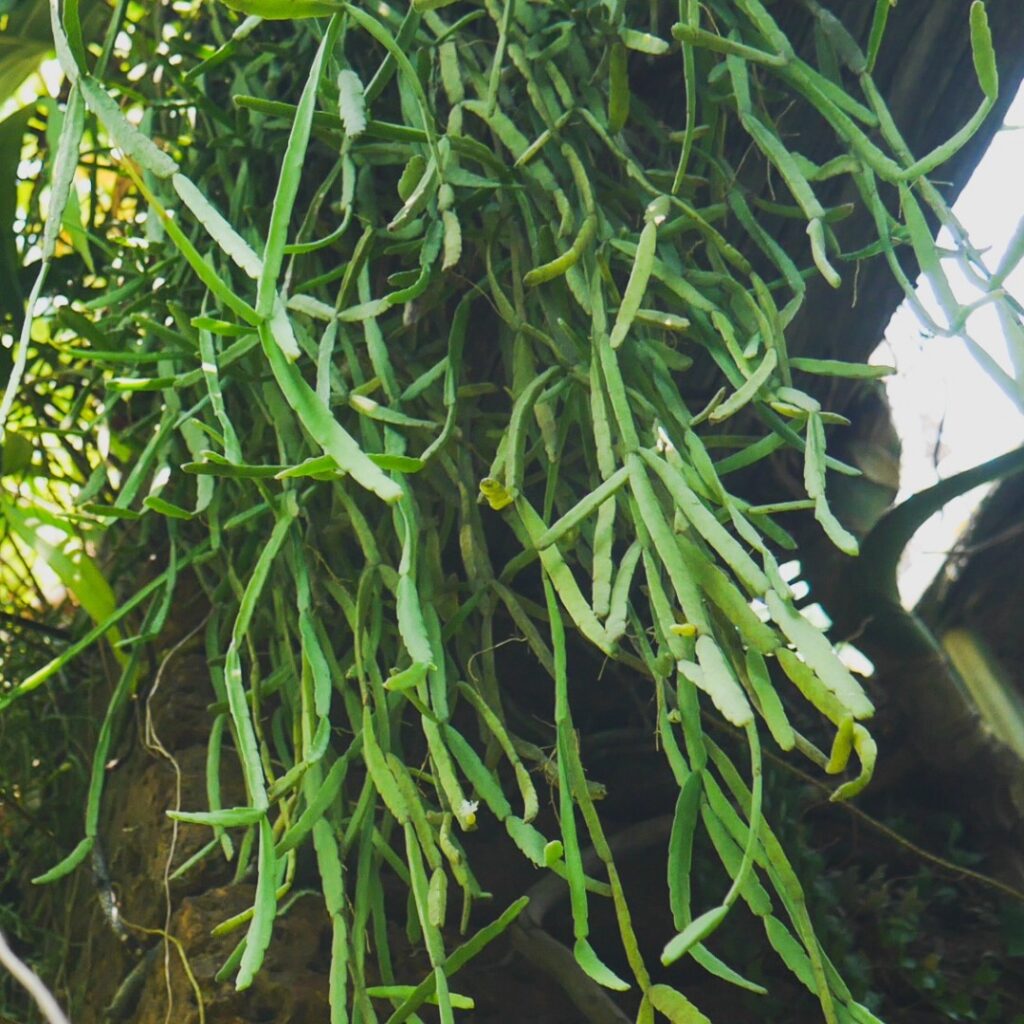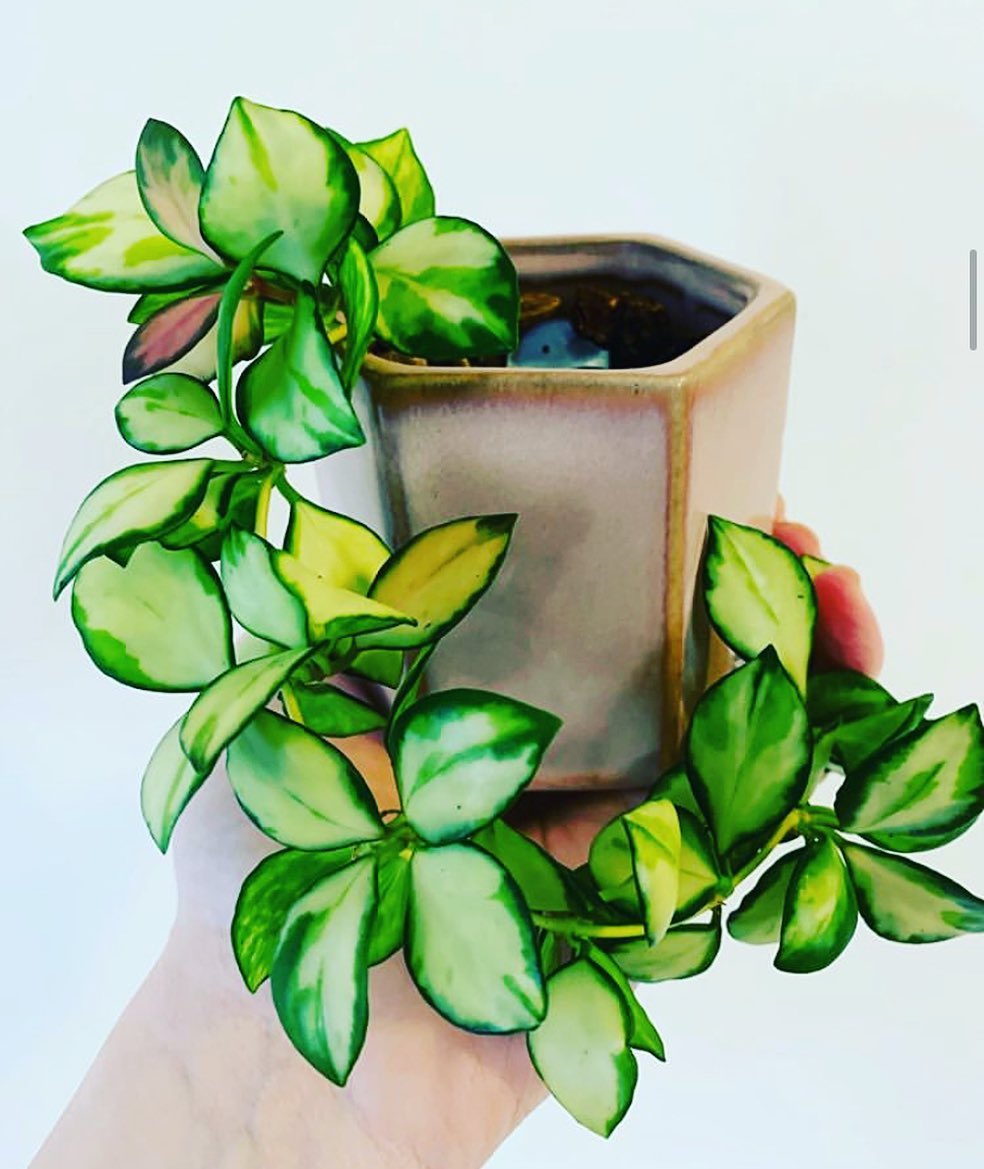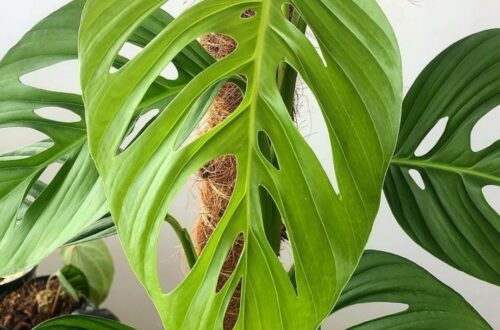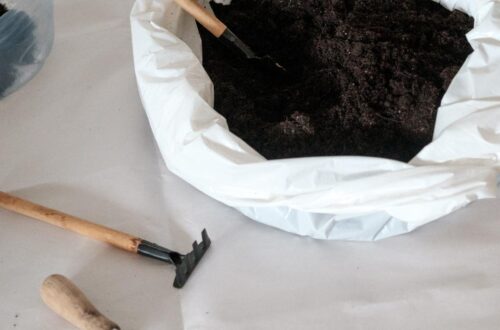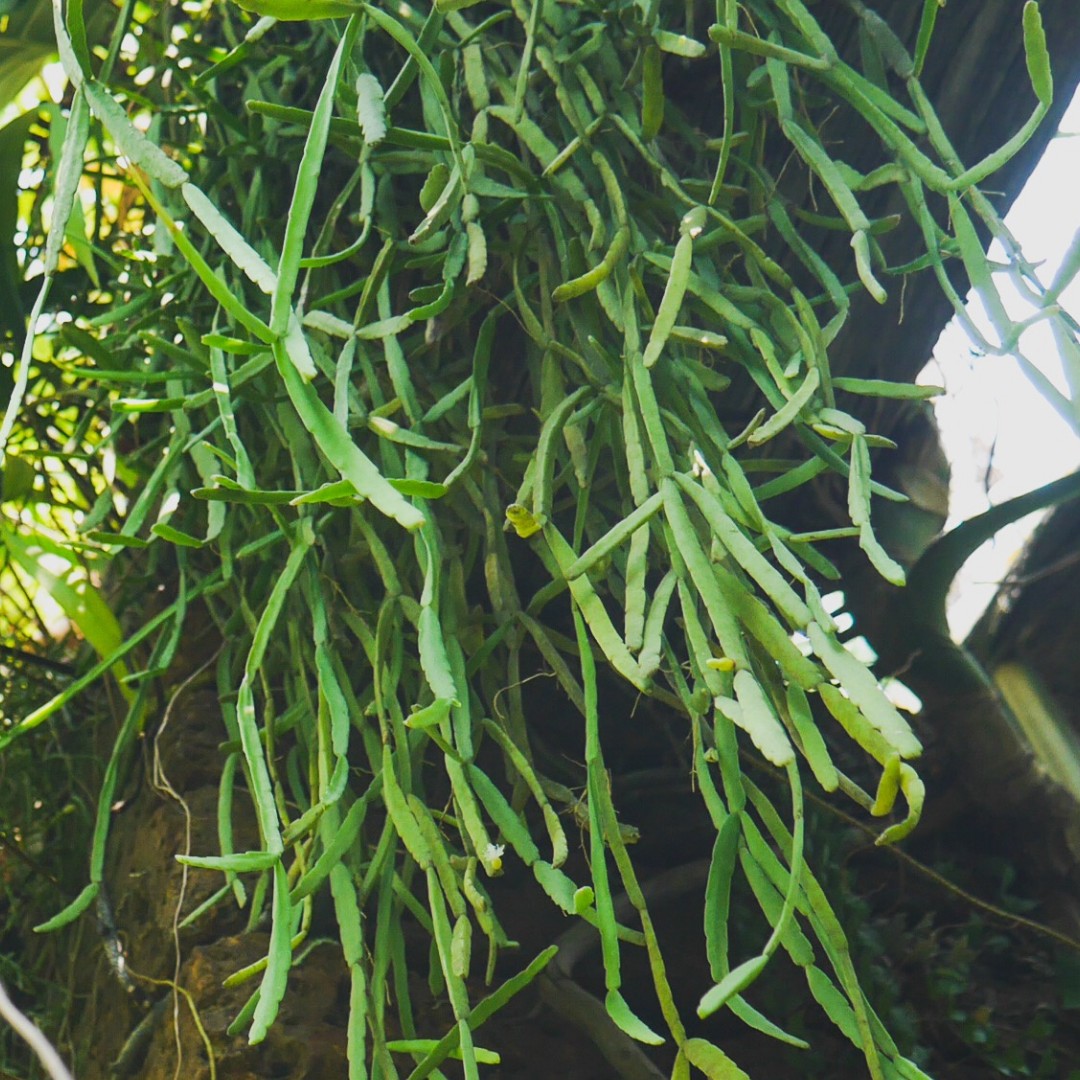
Rhipsalis Paradoxa
Welcome to our guide to the Rhipsalis Paradoxa all you need to know about care and propagation, including light, water, soil, temperature and humidity needs.
The key to caring for this plant is plenty of light and avoid wet soil by using a really well draining mix and water only when dry.
Rhipsalis Paradoxa Care Summary
| Light needs: | Bright indirect sunlight. |
| Watering needs: | Check weekly, water if soil is totally dry. |
| Fertilizer: | High nitrogen feed in the spring and summer. |
| Soil: | Loose, airy, well-draining soil. |
| Humidity: | 60-70%. |
| Temperature: | 18 to 24°C (64 to 75°F). |
| Where to buy: | Try our list of Rare Plant Shops. |
| Other names: | Chain cactus, Chain Rhipsalis. |
| Common issues: | Overwatering. |
Introduction
Rhipsalis Paradoxa is a great houseplant due to its low-maintenance and non-fussy nature. Native to Brazil, this hardy plant requires little attention and looks great in hanging baskets and planters.
See also: Succulent Soil, Succulent Propagation, Cereus Jamacaru, Aeonium Canariense, Tigers Jaw Succulent.
Light Needs
Bright indirect sunlight or partial shade works well. If you are growing it indoors, place it near an East-facing window with filtered light. For outdoor placement, make sure it does not face scorching afternoon sun, which can cause sunburn.
How Often To Water Rhipsalis Paradoxa
Since it originally belonged to wet, tropical forests, it needs thorough watering once or twice a week, but only if the soil is dry. Give it a really good drenching and then allow the soil to dry before watering again. This prevents risks of overwatering, which may be a source of root rot and fungal infections.
Tip: this plant can get root rot very easily, so make sure you only water it if the soil is already dry. And let all the water drain off, don’t leave the plant pot sat in a saucer of water.
Fertilizer
You can apply fertilizers with moderate nitrogen during its growing period in the spring and summer to boost the flowering. However, it grows fine without external feeding as well.
Soil
You need loose, airy, well-draining soil to protect it from waterlogging. You can use a commercial cactus mix and or make your own, as long as it contains coarse material.
Tip: they must be in a very well draining medium, as they get root rot very easily. Some people even add extra perlite to cactus compost to make sure this plant does not sit in wet soil.
When to Repot Rhipsalis Paradoxa
The small, clumped roots mean you do not have to repot it frequently. Observe the plant yearly to see any signs of overgrowth through drainage holes, and transfer it to a larger pot only during the spring.
Humidity
These houseplants grow best under humidity between 60 to 70% due to their tropical origin. This is why they are widely used in kitchens and bathrooms. If you live in a dry area, make sure you use well-draining soil and mist the plant regularly to maintain humidity levels.
Temperature
18 to 24 °C (64 to 75°F) is the ideal temperature for its proper growth and development. Dropping the temperature further shocks the plant, which may be lethal.
How to Propagate Rhipsalis Paradoxa
You can choose to propagate it through seeds as well as stem cuttings. Rhipsalis Paradoxa propagation through stem cuttings is comparatively easier and yields better success than seeds. The best time to get cuttings is the spring which can further be planted in soil or water. Take stem cuttings, and root them in moist soil. Keep it humid (you can put a plastic bag over the pot, but leave it slightly open so some air can move). They should root over a month or two, and once the cuttings start growing from the top you can treat them as a juvenile plant.
See also: Succulent Propagation (with pictures).

Rhipsalis Paradoxa Flower
They can flower all year round, but mainly in spring, with small white blooms. They are not known for their flowers which are fairly small, but they are really pretty when the whole plant is in bloom.
how to take rhipsalis cuttings
You can take a cutting almost anywhere as long as you can get a whole leaf. but it is best just beneath a node. I would take fairly long sections so you can put a few nodes under the water or soil to root, and still have a lounge enough sections of cutting above the surface.
how fast does rhipsalis paradoxa grow
It is a fairly slow growing plant, don’t sit there and watch it grow!
rhipsalis paradoxa USDA Zone
Zones 9b-11.
Is Rhipsalis Paradoxa Poisonous?
Rhipsalis are non-toxic to cats and dogs
Rhipsalis Paradoxa Vs Minor
The Rhipsalis Paradoxa Minor differs from the standard plant as it has much thinner and smaller leaves and branches.
Other Names
Chain cactus, Chain Rhipsalis
Where To Buy
Try our list of Rare Plant Shops.
FAQs and Common Problems
The best part about getting this houseplant is its easy-to-care nature. Besides a few pest infestations and root diseases due to to overwatering, it pretty much grows by itself. Keep track of the watering to prevent root rot and infections, and allow the soil to dry before watering again.
To prevent your Rhipsalis from problems, keep it away from direct sunlight and water accordingly. A well-draining potting mix and the right temperature and humidity levels significantly help keep it healthy.
Brown or limp leaves
If the Rhipsalis Paradoxa leaves turn brown and crispy, it needs a deep, thorough watering. In the case of limp leaves, the plant is suffering from overwatering, and you should cut back on the watering.
Is Rhipsalis Paradoxa an indoor or outdoor plant?
Rhipsalis Paradoxa thrives best indoors, away from direct sunlight.
Additional Resources
Links:
- More info on the Wikipedia page.
- More info on the Kew Gardens plant page.
- More info on the RHS plant page.
Other Articles You Might Like
There you have it, here ends our guide to this beautiful plant. You might also like our other articles:
Succulent Soil, Succulent Propagation, Tigers Jaw Succulent.
Please follow us on Instagram and Pinterest for regular plant updates and occasional plant giveaways.
